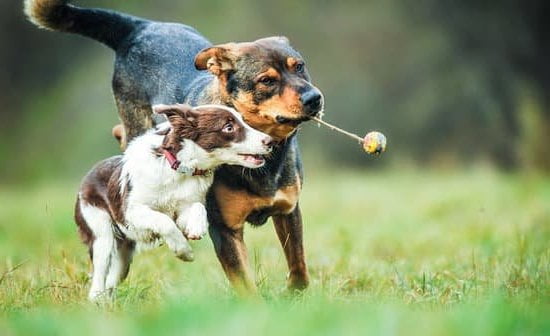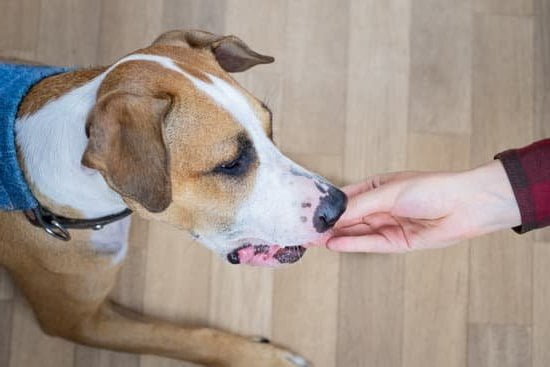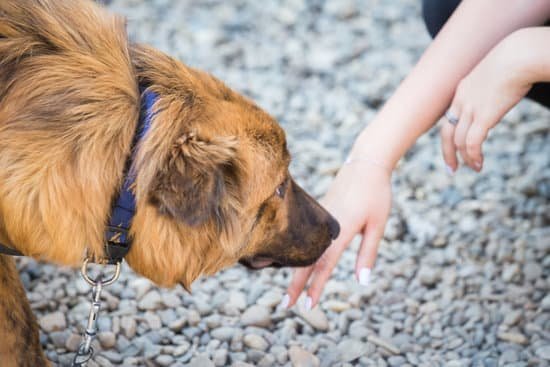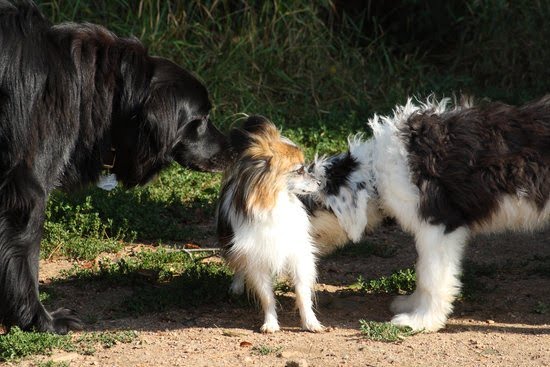Training a dog requires not only patience and dedication, but also the ability to keep your furry friend focused on the task at hand. In this article, we will explore effective strategies on how to get a dog to focus during training, ultimately leading to successful and rewarding training sessions.
Understanding your dog’s behavior and attention span is crucial when it comes to training. Dogs, like humans, have their own unique personalities and learning capabilities. By recognizing these traits, you can tailor your training methods to suit your dog’s individual needs, making the process more effective.
Creating a distraction-free training environment is key in capturing your dog’s attention. Minimizing external stimuli and establishing a consistent routine can help your dog stay focused during training sessions. Additionally, incorporating positive reinforcement techniques, mental stimulation, exercise, regular training sessions, consistency, and addressing common challenges can further enhance your dog’s ability to concentrate and learn effectively.
Understanding Your Dog’s Behavior and Attention Span
Canine Attention Span
Just like humans, dogs also have different attention spans. Some dogs can focus for longer periods, while others may get distracted easily. Understanding your dog’s attention span is crucial when it comes to training them effectively. By observing your dog’s behavior and responses during training sessions, you can gauge their attention span and make necessary adjustments to keep them focused.
Body Language Cues
Dogs communicate through their body language, and this includes their level of focus. Learning to read your dog’s body language cues can help in determining whether they are engaged and focused during training. Signs of focus may include direct eye contact, alert posture, and responsive actions to your commands. On the other hand, signs of distraction may include wandering eyes, fidgeting, or lack of response.
Understanding Individual Behavior
Each dog has its unique temperament and behavior patterns that influence their attention span. Factors such as breed characteristics, age, energy levels, and past experiences play a role in determining how long a dog can stay focused during training. By understanding your individual dog’s behavior and temperament traits, you can tailor your training approach to suit their specific needs.
By understanding your dog’s behavior and attention span, you can effectively tailor your training methods to keep them focused. Observing their attention span, interpreting body language cues, and considering individual behavior traits are essential in ensuring successful training sessions. Understanding these aspects will help you address any challenges related to maintaining focus during training and improve the overall learning experience for both you and your furry companion.
Creating a Distraction-Free Training Environment
When it comes to training your dog, creating a distraction-free environment is crucial for ensuring that your furry friend can focus and learn effectively. Here are some tips on how to set up the perfect training space for your pooch:
- Choose a quiet and familiar location: Find a calm, familiar spot in your home or yard where your dog feels comfortable and at ease. This will help minimize external distractions and allow your dog to focus on the training exercises.
- Remove potential distractions: Before starting a training session, remove any toys, food dishes, or other items that might divert your dog’s attention away from the task at hand. Clearing the area of unnecessary clutter will help maintain your dog’s focus on you and the training process.
- Use visual barriers if needed: If you’re working on specific commands or behaviors with your dog, consider using visual barriers such as baby gates or temporary fencing to block off any areas that might create distractions. This can be especially helpful when training in outdoor spaces with numerous stimuli.
By implementing these strategies, you can ensure that your dog has the best possible chance of staying focused during training sessions.
Remember that creating a distraction-free environment is just one piece of the puzzle when it comes to helping your dog stay focused during training. It’s also important to understand your dog’s individual behavior and attention span, as well as using positive reinforcement techniques to keep them engaged. In the next section, we’ll explore these key elements in more detail and provide valuable insights into how to get a dog to focus during training.
Using Positive Reinforcement Techniques to Keep Your Dog Focused
Positive reinforcement is a powerful tool in dog training, as it helps to keep your dog focused and engaged during training sessions. By rewarding desired behaviors with treats, praise, or toys, you can create a positive association with the training process for your dog. This encourages them to pay attention and actively participate in the learning experience.
One effective way to utilize positive reinforcement is by using treats that are especially enticing to your dog. High-value treats that your dog really enjoys can motivate them to stay focused and attentive during training. It’s important to be consistent with rewarding good behavior in order to reinforce the desired actions and encourage continued focus.
Another positive reinforcement technique is using verbal praise and physical affection as rewards for good behavior. Dogs respond well to hearing their owners’ happy and encouraging voices, which can help them stay engaged and motivated. Additionally, petting or giving your dog a quick belly rub can also serve as a valuable reward for maintaining focus during training.
In addition to treats and praise, using interactive toys or games as rewards for your dog’s focused behavior can be an effective method of positive reinforcement. This adds an element of fun and playfulness to the training process, making it more enjoyable for your dog while maintaining their focus on the task at hand.
| Positive Reinforcement Techniques | Description |
|---|---|
| High-Value Treats | Treats that are especially enticing to your dog |
| Verbal Praise and Physical Affection | Using encouraging words and affectionate gestures as rewards |
| Interactive Toys or Games | Using playtime as a reward for focused behavior |
Incorporating Mental Stimulation and Exercise Into Training Sessions
When it comes to training your dog, mental stimulation and exercise are crucial elements for maintaining focus. Dogs are naturally curious and energetic, so keeping their minds and bodies engaged during training is essential for success. Here are some strategies on how to incorporate mental stimulation and exercise into your dog’s training sessions:
1. Interactive Play: Incorporate interactive games and toys into your training sessions to keep your dog mentally stimulated. Games such as hide and seek, puzzle toys, or fetch can help keep your dog focused and engaged.
2. Obedience Training in Action: Instead of just practicing basic commands in a static environment, take your training sessions outdoors or to new locations where there are different sights, sounds, and smells. This will challenge your dog’s focus in real-world situations.
3. Physical Exercise: Before starting a training session, make sure your dog has had an adequate amount of physical exercise to release excess energy. A tired dog is more likely to be attentive during training.
By incorporating these mental stimulation and physical exercise elements into your dog’s training routine, you are not only ensuring that they stay focused but also providing them with a well-rounded learning experience that will benefit their overall behavior and well-being.
Remember to have patience with your furry friend as they learn how to focus during training, using positive reinforcement techniques may encourage good behavior from their end. And lastly always stay consistent – that way both you and your pet will reach the goals set at the beginning of the journey towards better behavior for a well-behaved furry friend.
Implementing Regular Training Sessions and Consistency
Consistency is key when it comes to training your dog to focus. By implementing regular training sessions, you are creating a routine that your dog will become accustomed to, making it easier for them to focus during each session. Dogs thrive on routine and structure, so having consistent training sessions will help reinforce the behavior you want to see.
When scheduling training sessions, it’s important to keep them short and frequent. Aim for multiple short sessions throughout the day rather than one long session. This will help keep your dog engaged and prevent them from becoming bored or distracted. Additionally, try to schedule training sessions at a time when your dog is most alert and focused, which is typically after they have had some exercise and mental stimulation.
During each training session, make sure to focus on a specific skill or behavior that you want to work on with your dog. Whether it’s practicing commands like sit, stay, or come, or working on leash manners or tricks, having a clear training goal for each session will help keep both you and your dog on track.
One way to ensure consistency in your training sessions is by using positive reinforcement techniques consistently and in the same manner each time. Rewarding your dog for their focus and good behavior will create a positive association with training and motivate them to stay focused during future sessions.
| Key Strategies | Details |
|---|---|
| Schedule regular training sessions | Consistent routine helps dogs stay focused |
| Keep sessions short and frequent | Prevent boredom or distraction |
| Have a clear goal for each session | Focused objectives aid in keeping attention |
| Use positive reinforcement consistently | Create positive associations with training |
Addressing Common Challenges in Maintaining Focus
Identifying Common Distractions
During training, it’s important to be aware of the common distractions that may cause your dog to lose focus. These distractions can vary depending on the environment, but some common ones include other animals, noises, and unfamiliar scents. Understanding what distracts your dog will allow you to anticipate these situations and take steps to minimize their impact on training sessions.
Strategies for Managing Distractions
One effective strategy for managing distractions is desensitization. This involves gradually exposing your dog to the distraction in a controlled manner, allowing them to become more accustomed to it over time. For example, if your dog is easily distracted by other animals during training, you can start by practicing in an area where they are present at a distance, then gradually decrease the distance as your dog becomes more comfortable and focused.
Building Resilience and Focus
Another key aspect of addressing common focus challenges is building resilience in your dog. This can be done through mental stimulation activities and exercises that require focus and problem-solving skills. Engaging your dog in activities such as puzzle toys or scent work can help improve their ability to maintain focus during training sessions. Additionally, regular exercise can also contribute to better focus by reducing excess energy and promoting relaxation.
By understanding and actively working through these common challenges in maintaining focus during training, you can set your dog up for success in their learning and behavior modification journey. Training aids and resources such as clickers or treat pouches can also provide valuable assistance in maintaining focus and reinforcing positive behaviors.
Remember that consistency is key when addressing these challenges – with patience, practice, and positive reinforcement techniques, you can effectively help your dog stay focused during training sessions.
Utilizing Professional Training Aids and Resources
In addition to understanding your dog’s behavior and creating a distraction-free environment, utilizing professional training aids and resources can significantly enhance your dog’s ability to focus during training. These tools can help guide and reinforce positive behaviors in your dog, leading to more successful training sessions.
One popular training aid is the use of clickers, which produce a distinct sound that can be paired with a desired behavior. By associating the click with a reward, such as a treat, your dog will learn to connect the action with a positive outcome. This can help sharpen their focus and improve their response to commands.
Another helpful resource is the use of visual cues, such as colored flags or markers, to direct your dog’s attention during training exercises. These cues can provide clear signals for your dog to follow and can aid in maintaining their focus on specific tasks.
Professional resources such as dog training classes or working with a certified trainer can also provide valuable support in teaching your dog to concentrate during training. These experts can offer personalized guidance and feedback on how to tailor your approach to best suit your dog’s individual needs.
By incorporating these professional training aids and resources into your sessions, you can create an optimal learning environment for your dog that encourages attentiveness and engagement. With consistent use and positive reinforcement, you can help improve your dog’s focus and overall performance in training activities.
Troubleshooting and Problem-Solving for Persistent Focus Issues
When it comes to dog training, maintaining your dog’s focus can be a common challenge. The good news is that there are several strategies you can use to troubleshoot and problem-solve for persistent focus issues. By understanding the root cause of your dog’s lack of focus and implementing targeted solutions, you can help improve their attention during training sessions.
One effective way to address persistent focus issues in your dog is to evaluate the training environment. Is there something in the environment that is distracting your dog? It could be noise, other pets, or even an uncomfortable temperature. By creating a distraction-free training environment, you can help your dog stay focused on the training at hand. This may involve finding a quiet space in your home or using visual barriers to minimize outside distractions.
In addition to creating a distraction-free environment, it’s important to incorporate mental stimulation and exercise into your dog’s routine. A tired dog is often more focused and receptive to training.
Taking your dog for regular walks, engaging in interactive play sessions, and providing puzzle toys can help channel their excess energy and improve their ability to concentrate during training. Understanding how much exercise and mental stimulation your specific breed of dog needs is crucial in keeping them focused during training sessions.
Conclusion and Recap of Key Strategies for Successful Dog Training Focus
In conclusion, successfully training a dog to focus requires patience, understanding, and consistent effort. Throughout this article, we have covered various strategies for getting a dog to focus during training, from creating a distraction-free environment to utilizing positive reinforcement techniques. It’s important to remember that every dog is unique, and what works for one may not work for another. Understanding your dog’s behavior and attention span is crucial in tailoring your training approach to their specific needs.
Consistency is key when it comes to dog training. Implementing regular training sessions and sticking to a routine will help reinforce the desired behaviors and improve focus over time. Additionally, incorporating mental stimulation and exercise into training sessions can help prevent boredom and channel your dog’s energy in a positive way.
If you encounter challenges in maintaining your dog’s focus during training, don’t get discouraged. Troubleshooting and problem-solving for persistent focus issues may require patience and persistence, but with the right approach, you can address common challenges effectively. Remember that professional training aids and resources are available to assist you in the process.
By understanding your dog’s behavior, creating a distraction-free environment, using positive reinforcement techniques, incorporating mental stimulation and exercise, ensuring consistency in training sessions, addressing common challenges effectively, utilizing professional aids if necessary, and persistently troubleshooting any persistent issues – you can increase the likelihood of success in getting your dog to focus during training.
Frequently Asked Questions
How Do You Train a Distracted Dog?
Training a distracted dog can be challenging, but it’s important to start in a quiet environment with minimal distractions. Using a clicker or verbal cues can help regain their focus, and rewarding them for paying attention will reinforce the behavior.
How Do You Train a Hyper Focused Dog?
When training a hyper-focused dog, it’s crucial to redirect their intense focus onto the desired task. This can be achieved by using high-value treats or toys to keep them engaged and rewarding them for completing the training exercises without getting too fixated.
What Is the Hardest Thing to Train a Dog to Do?
The hardest thing to train a dog to do is often reliable off-leash obedience. This requires a strong bond between the owner and the dog, as well as consistent training and reinforcement of commands in various environments and distractions. It also involves trusting the dog’s response to commands even when they are not physically restrained by a leash.

Welcome to the blog! I am a professional dog trainer and have been working with dogs for many years. In this blog, I will be discussing various topics related to dog training, including tips, tricks, and advice. I hope you find this information helpful and informative. Thanks for reading!





